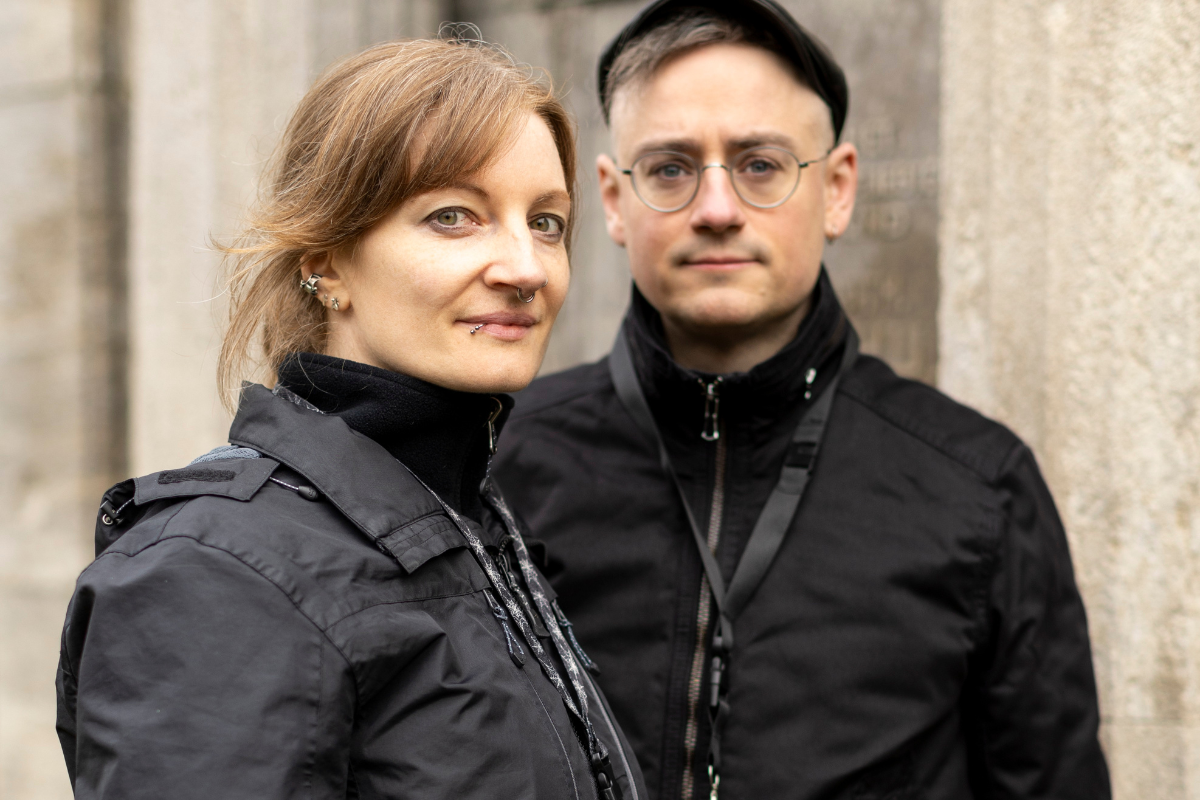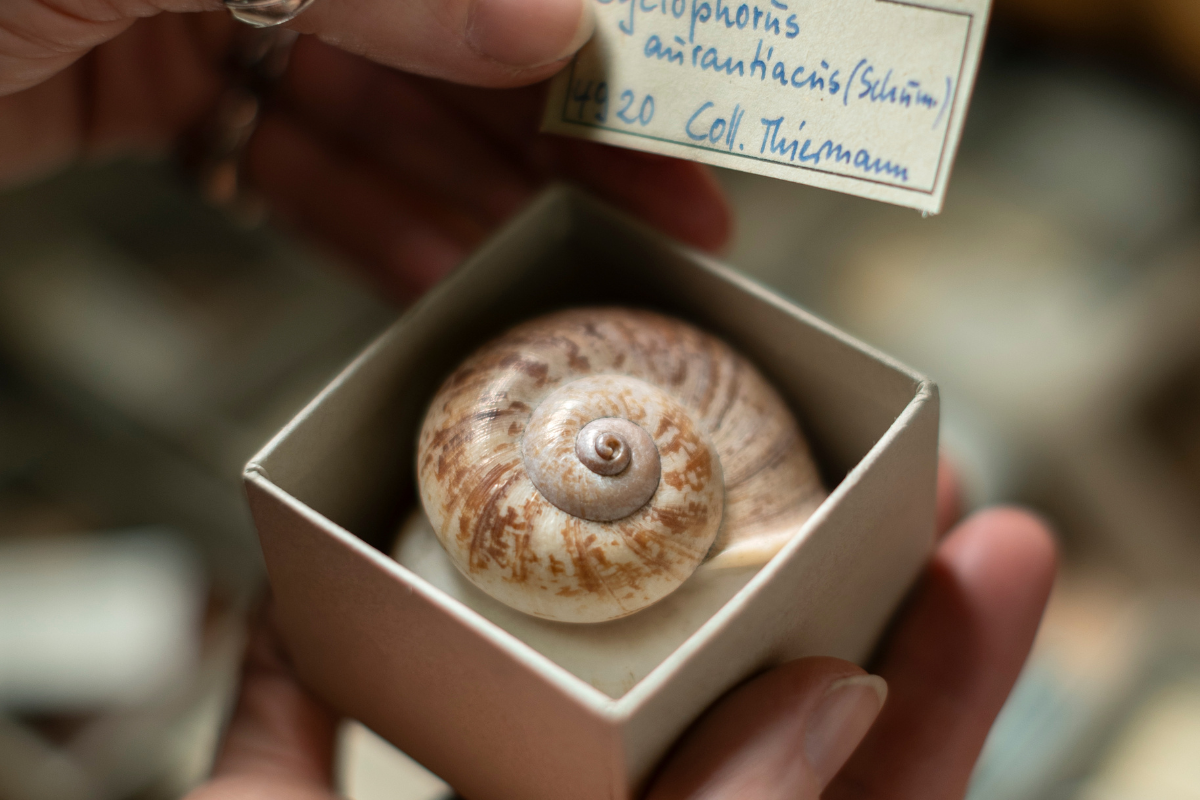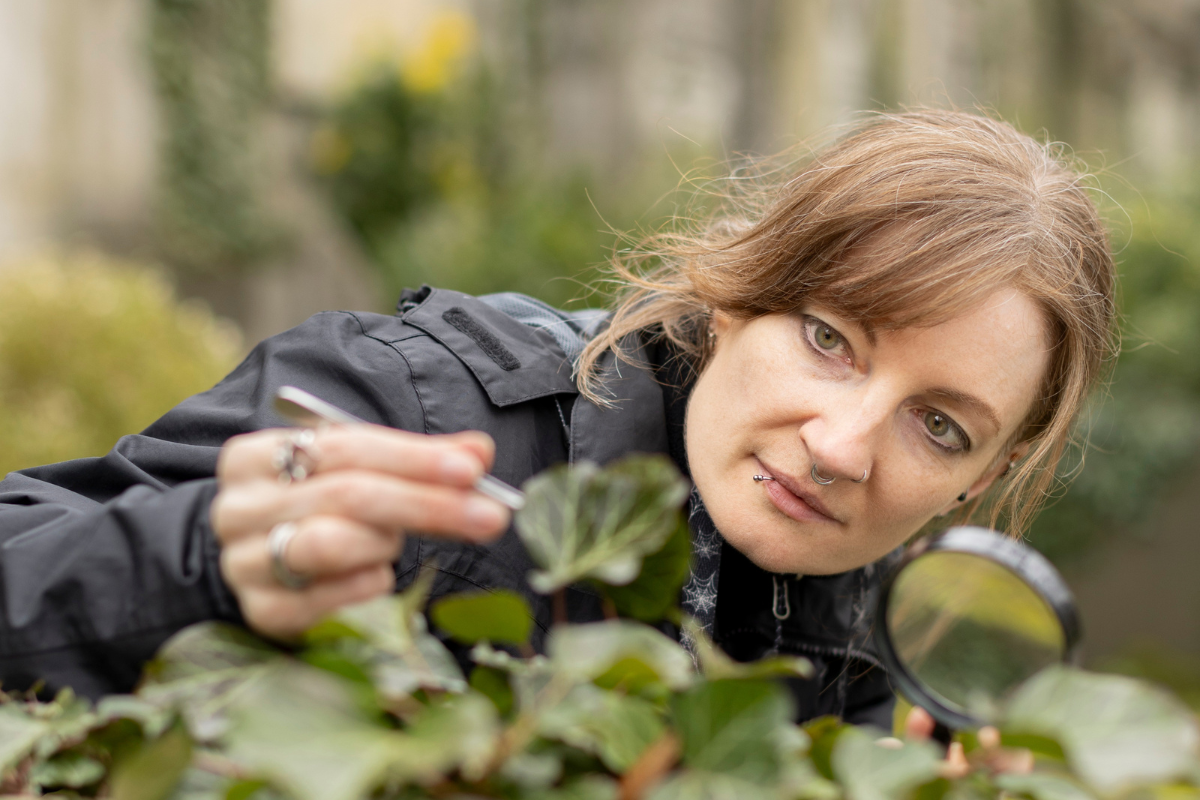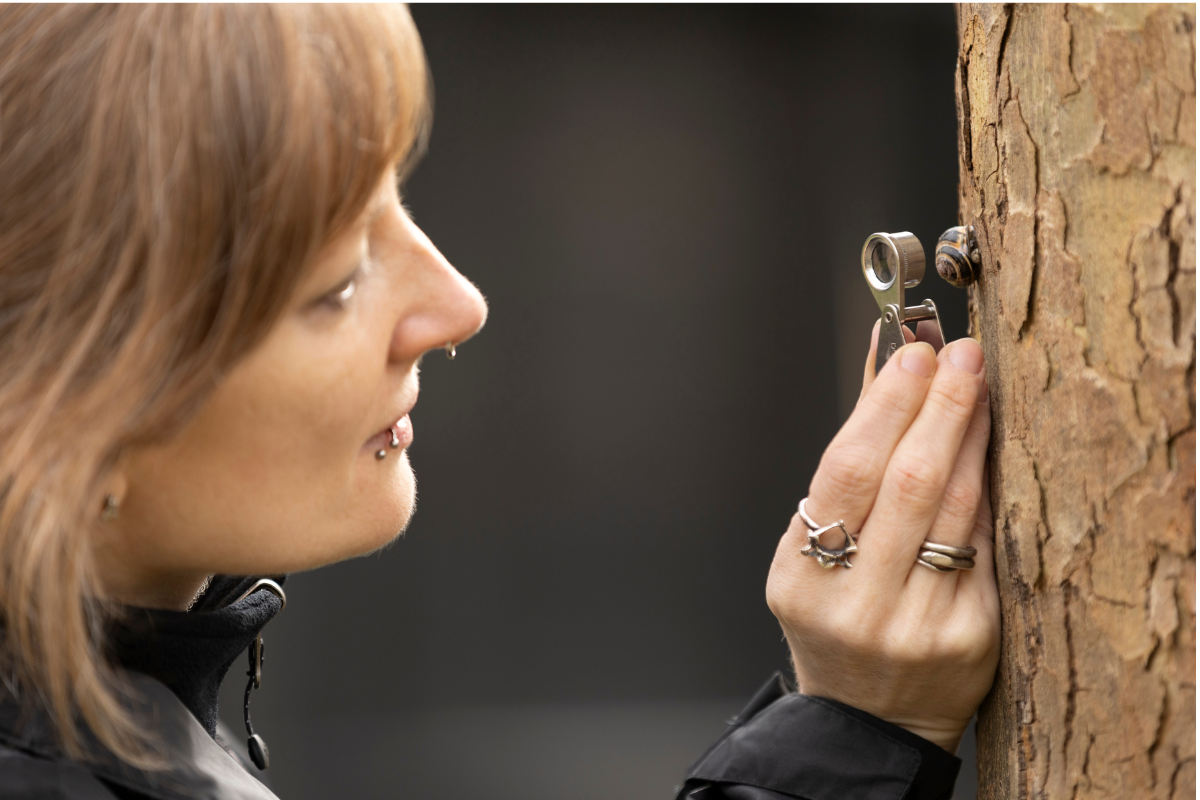Katharina von Oheimb kneels in a mat of ivy between old graves and carefully lifts leaf after leaf with tweezers, checking to see if one of her research objects is sitting on the underside. The damp weather is perfect. On grey days like this, she loves to wander through Wilmersdorf cemetery. Together with her research and life partner Parm von Oheimb, she then searches for slimy molluscs from the class Gastropoda, or in a few words: snails.
With their high leather boots and blue toolbox, one might mistake them for a kind of special task force. A charmingly smiling one, however, whose mission is not death, but life, which finds its niches here between the graves. Their research subjects often live in secret, gliding around between leaves and stones, in cracks and cavities. Many snail specimens are so small that humans hardly notice them.
‘With their moist, dry, open and overgrown areas, cemeteries offer a valuable mosaic of habitats for snails,’ says Parm. ‘And the gravestones form artificial rocks that some species like.’ Where they feel at home, their predators can also be found, such as hedgehogs, common toads, slow worms, mice, and birds. Especially in quiet cemeteries. ‘They are amazingly lively places if you take a closer look,’ says Katharina.
To investigate the diversity of snails in Berlin's cemeteries, the two biologists launched the ‘Life between graves’ project in 2022. Since then, the biologists have systematically combed through five Berlin cemeteries in pilot studies and identified 35 snail species there. These include common species such as the grove snail with its distinctive banding, but also rare and sometimes endangered species. In future, they want to scrutinise many more of the 200 or so cemeteries in Berlin.

Crawling between graves
Katharina has marked out a field of around 20 square metres with white and red marker sticks: the investigation area. They note down what they find in it on data sheets and analyse some of it in the lab. ‘We try to collect empty shells or photograph animals wherever possible, but we also take live specimens with us,’ says Katharina. Very small snails, for example, which they catch with soil samples and identify under the binoculars, or nudibranchs, where it is necessary to examine the reproductive organs to identify them.
Katharina has found a large shiny snail - Oxychilus draparnaudi. ‘It lives hidden in the leaves and eats other snails,’ she says and places the harmless-looking animal, which is the size of a thumbnail, back on the leaves. A few moments later, it stretches out its antennae. Katharina turns back to the ivy and finds an edged snail lying on the ground a few metres away. It is an empty shell with feeding marks. The animal was probably preyed upon by a predatory beetle; a mouse would have cracked open the shell on one side instead of breaking it open in a spiral along the coil.
‘We can use such observations to draw conclusions about interactions in the ecosystem.’ The edged leaf snail, which originally comes from Italy and was unknown to the region until a few years ago, was first detected by Katharina and Parm in Berlin cemeteries in 2022. A subsequent analysis of citizen science data revealed that the species had already been photographed in Berlin in 2019. ‘It is now one of the most common snail species at the Wilmersdorf cemetery,’ says Katharina. ‘It may be in competition with native species, but has not yet displaced them.’
The aim of the cemetery project is not just to record diversity. It also aims to find out why certain species are distributed where within cities and where they are not - and which factors favour this: the location of the cemetery, for example, whether it is isolated by roads and buildings or located on a green corridor, how long it has existed and how it is managed. ‘There are still huge gaps in our knowledge about the ecology of land snails,’ says Parm. ‘We are trying to make a contribution to closing some of them.’
A love for the oozy and bizarre
When Katharina or Parm talk about snails, you can hear an enthusiasm that not many people have for these slimy little creatures. They don't feel disgust. For both of them, snails are more like wonder animals. ‘They are an evolutionarily very successful group of animals that have developed many ecological niches; snails can even survive in deserts,’ says Parm.
And they have developed very special characteristics. For example, there are nudibranchs that mate tightly wrapped around a mucus thread. And among the sea snails there are those that suck the blood of fish or even paralyse and eat them with a poisonous dart. German cemeteries are also home to the blind snail Cecilioides acicula, which nibbles on human bones in the ground to obtain calcium carbonate for building its house.
It was the inorganic chemistry practical for biology students that brought Katharina and Parm together. They met for the first time during their undergraduate studies at Justus Liebig University Giessen. ‘We realised that we had very similar interests, soon we were both working on molluscs and became a couple,’ says Katharina. From then on, love and research went hand in hand. From then on, love and research went hand in hand. They completed their doctorates with the same supervisor and moved to London in 2015. There they began to specialise in land snails at the Natural History Museum. As snail experts, they also came to the Museum für Naturkunde Berlin in 2019 to work on a project to record biodiversity in Vietnam (see for Nature no. 7).
They accompanied two expeditions to Southeast Asia, combed through the rainforest - and found 116 snail species in the jungle of Cuc Phuong National Park alone, including more than 30 previously unknown species, which they are now analysing anatomically and genetically to describe them as new species.
The idea for the Berlin cemeteries came to them during the coronavirus pandemic. They wanted to start a project on their doorstep. It was no coincidence that they turned to burial sites of all things. After all, they both share a passion for the bizarre and morbid. They have already organised an exhibition on animals that were considered messengers of death in popular belief. Since 2012, they have been connecting on their blog Schemenkabinett. They combine cultural-historical observations on death and transience with scientific knowledge, describe unusual burial rites, tell of visits to curious chambers of wonder or macabre phenomena in the animal world.
On this gloomy day in spring, Katharina and Parm continue through Wilmersdorf cemetery, past freshly decorated and overgrown graves and to the flowering meadow at the former crematorium, where Katharina discovers the moss doll snail, which is rare in Berlin, with a keen eye. It is so small that almost anyone in this city would probably have overlooked it.


